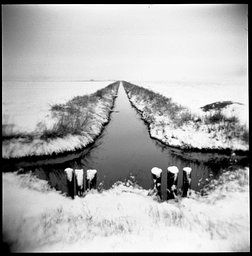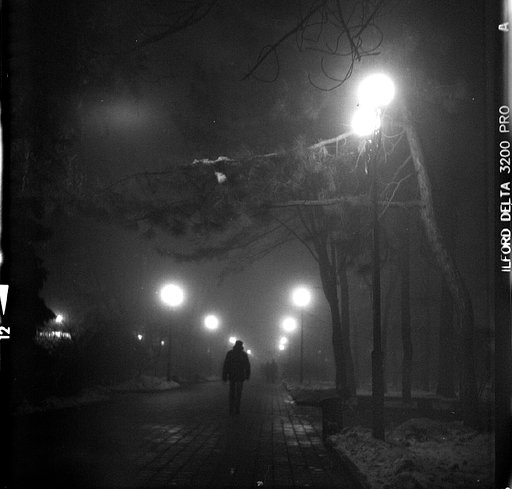Should you push film in low light?
There are a few reasons why you may want to push film in low light. This could include finding yourself in a dark environment with an unexpected lack of light which would necessitate a higher ISO to allow more light onto your film, or aesthetic preferences such as contrast and grain.



When shooting in low light, one thing to consider is whether the film stock available to you will be able to handle how dark your environment is. For example, there’s a higher likelihood for underexposure with an ISO 200 or 400 film stock in a dark or overcast environment, while an ISO 800 or upwards film roll will be able to handle the lack of light a little better.
In this case, you may consider pushing your ISO 200 or 400 film stock by one or two stops to compensate for the limited light source.
Aesthetic preference is also one of the possible considerations for pushing film in low light. Pushing film increases grain and contrast which often results in a lo-fi appearance and a dramatic mood in photos which many photographers go for.
Pushing or pulling the film involves shooting a film stock higher or lower than the ISO it’s initially intended to be shot at, e.g. box speed, in order to let more or less light onto your film. To push the film, you can shoot at a higher ISO, for example shooting an ISO 400 film stock at ISO 800.
20 Likes
ixynosep, doppelgangerdev, iwyiwy, chrislimpio, bob_b, ensysfeed, crismiranda, peterpan61, mrlostsoul, the-j, cinebarman, analogicznie69, mpscheerer, oukrid, mateuszw, rz01, delphin2, klawe, deonis_production & pinkbutterfly.
Anything missing?
Can’t find an answer to your question? Or do you have some useful advice to add to one of our courses? We want to build the world’s largest analogue learning space, so please send any further requests or information to school@lomography.com and we’ll take a look!
Photos From Other Students
Do you want to see your photos featured here for all Lomo School students to see? If you think your photos fit this article just tag them with “low light”. We take a look at all these photos and select our favorites. See all photos tagged with “low light” here.
More Courses
-
What are some tips for shooting film in low light?
From using film stocks with higher ISO, using prime lens, tripod and lightmeter, here are a few tips for shooting in low light situations such as overcast days, night shoots and indoor set ups.
-
What are the best tips for shooting neon lights on film?
From using fast film, exploring multiple exposures and perfecting your camera settings, here are some of the best tips for capturing neon lights on film.
-
What are the best lightmeter apps to use for film photography?
Here are some of the best lightmeter apps for iOS and Android devices to download for film photography.
-
What camera settings should I use for low light film photography?
There are a few settings you can tinker with to take photos effectively even in low light conditions. These include opening up your aperture or using a longer shutter speed in order to allow more light when taking a photo. You can also use a flash to take clearer photos of your subjects in low light.
-
How can I shoot film at night without a tripod?
There are a few tricks you can use to get a better shot without a tripod to work with, these include maximizing the available light source around you, picking a higher ISO film stock or pushing the film, as well as using a flash and faster lenses.
-
What are the difficulties of shooting film in low light?
There are a few difficulties you can face when shooting in low-light conditions such as indoors, places with a lot of shade, underwater, or at night time. The main difficulty is potential underexposure resulting in dark images with barely visible subjects. The outcome could also be grainier than photos taken in daylight.
-
What ISO film should I use when shooting film at night?
When shooting in low light conditions such as indoors or at night time, it’s best to choose a film stock with a high ISO such as ISO 400, 800 or 1600.





















